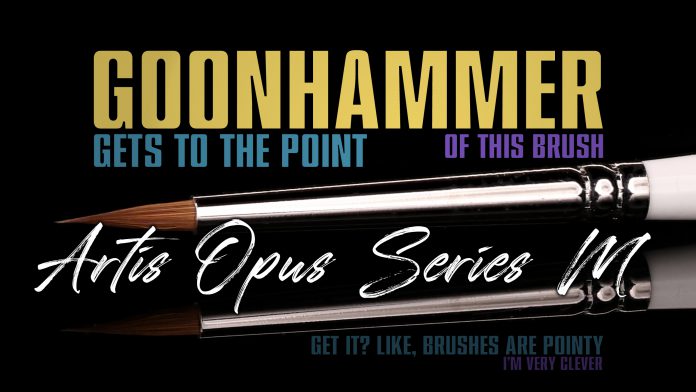Brushes are the most important tool in a painter’s arsenal, and there are a lot of them out there. In particular there are a lot of shapes and styles. The Artis Opus Series S, reviewed by us here, represents a more traditional brush. If you’ve ever picked up a brush and painted a mini it’s highly likely that brush was in the same family as the Series S.
Today we’re here to talk about the Artis Opus Series M. These are quite a bit different and it’s a difference you can feel when painting. If you’re only going to own 1 brush, you want the classic shape. But who among us only owns 1 brush?!
Before we begin, I’d like to thank Artis Opus for providing us with brushes for review. Even before that, there were already some of us that were big fans of Artis Opus brushes, which made this review all the more fun. Good stuff.
Ok so what makes these brushes different? Here’s the blurb from Artis Opus:
“Series M is our take on ‘Miniature’ brushes. Miniature brushes are characterised by shorter bristles, which offer less flex, and are preferred by many for detail and precision work, or freehand. Series M is the ideal companion to Series S, the perfect tool in your painter’s arsenal when a shorter, stiffer brush is needed.”
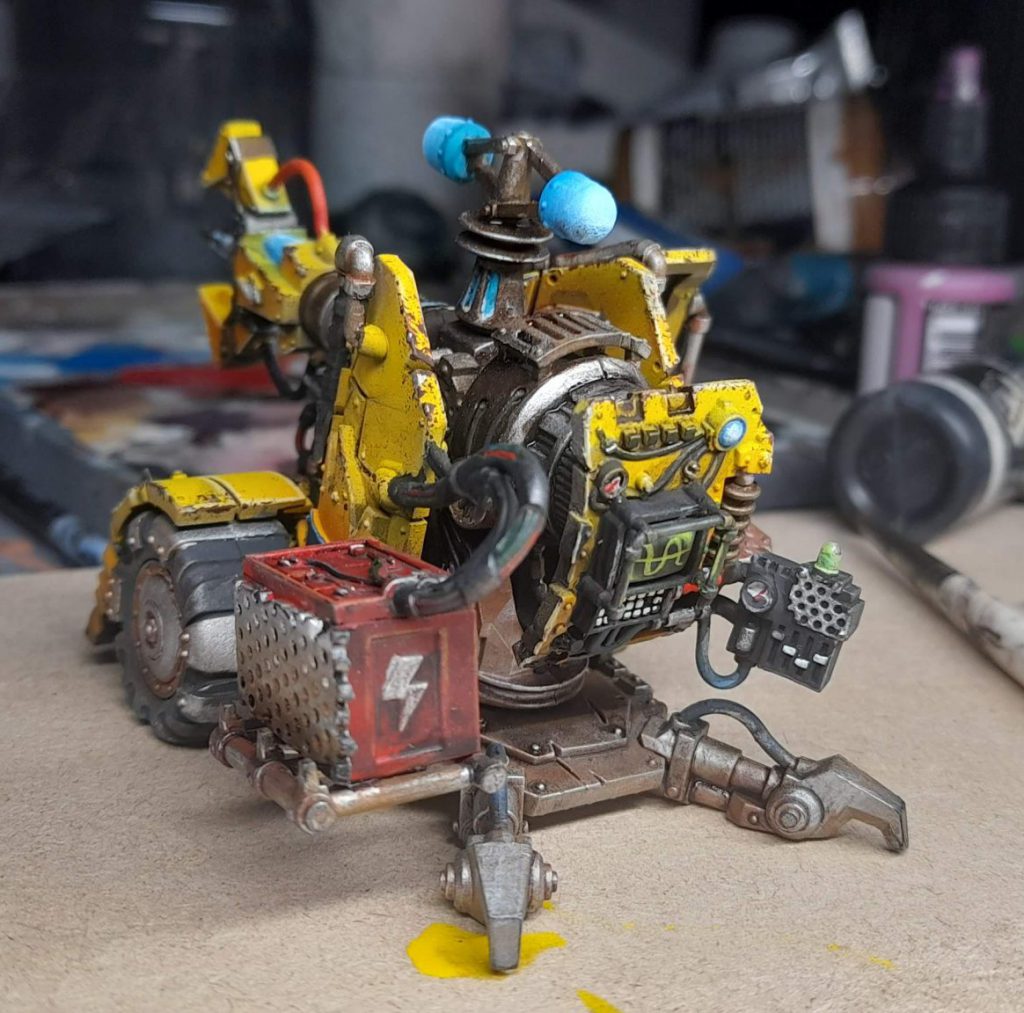
As this description suggests, these brushes are shorter and stubbier than those of Series S, which means they’re less suited to general painting, but exceptional when it comes to fine detail work like painting eyes, faces, makeup, painting fur on non-textured surfaces, lenses/gems, cross-hatching on fabrics, and adding fine scratches to surfaces like armour.
Cards on the table here, I usually don’t like teeny tiny brushes. In general I find them to be something of a false economy, paint dries quicker in a small belly and the razor-thin tip can be a bit of a pain when brushstrokes come to call. However, the Artis Opus M series, especially sizes 2 and 00, might be the ones to change my mind. Being able to paint fine lines works wonders when it comes to various stunts like doing earth-sky reflections in teeny tiny binocular lenses or denim textures on miniscule trousers.

Painting faces is probably my favourite part of miniature painting altogether, in fact I often paint a load of heads separately just to practise and refine my process, and, after getting a pair of magnifying specs, having a good fine brush is an essential upgrade. My main concern when it comes to premium brushes like this is that I am not as gentle with brushes as you should be (do as I say, not as I do) and so I tend to favour cheapo (like, 1/8th the price of these brushes) sables that won’t cause me to lose sleep if they get a bit battered. In truth, that’s probably an attitude that I could stand to unlearn, so maybe it’s a good thing?
In any case, I really like these brushes, they make painting the most daunting parts of a miniature that much easier, just make sure you wash ’em with brush soap at the end of your painting session.
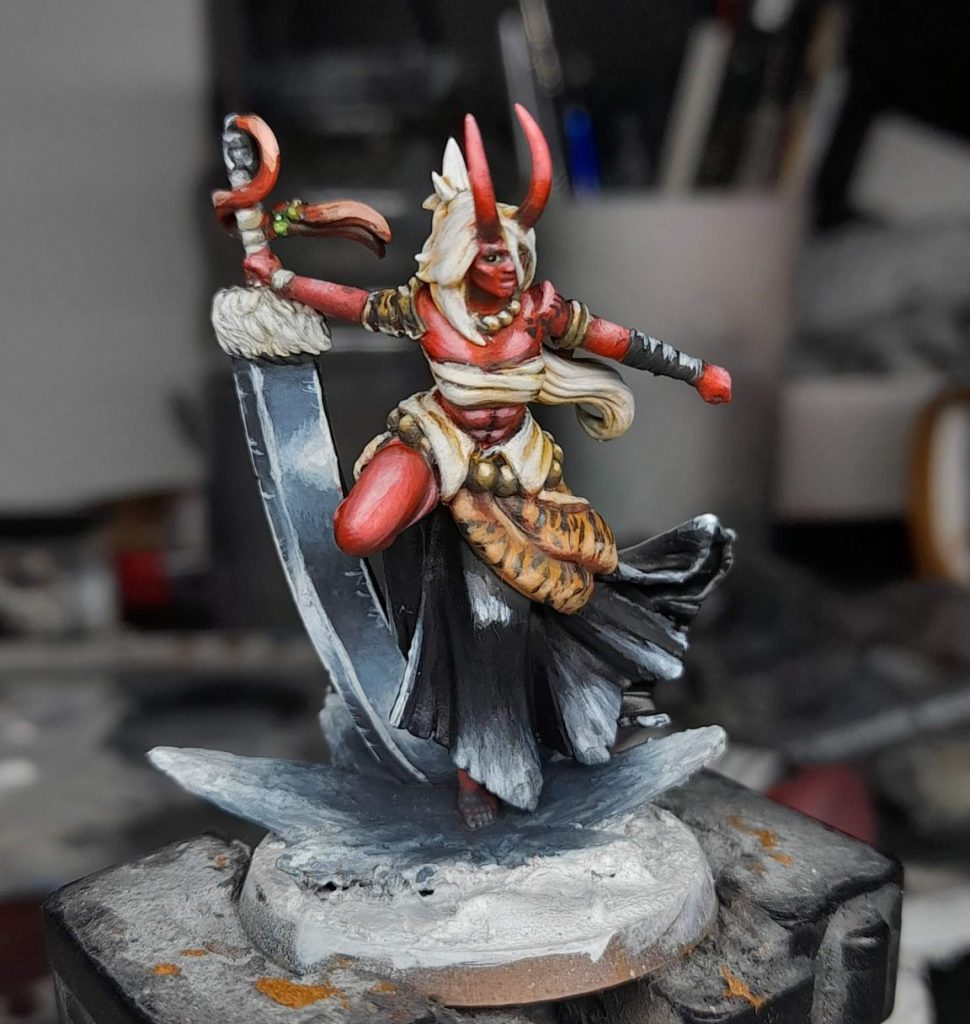
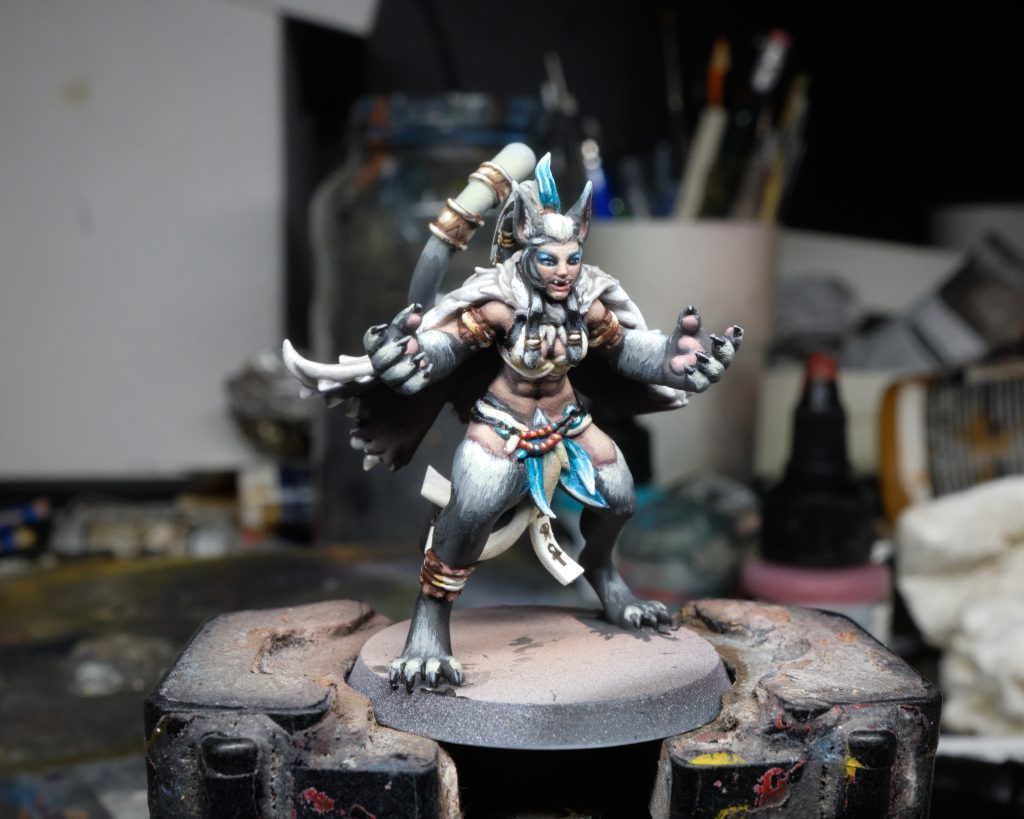
Skails
The idea of a brush geared towards freehand and precision work immediately got my attention. I enjoy doing freehand work, and have the kind of visual arts background that allows me to reproduce an image with accuracy. Using traditional mini painting brushes will do the task, but can often require coming back to redefine, smooth out, and sharpen lines. It is easy to make blobs and wide strokes with those brushes.
My first use of the M series #2 was working on this banner. I found the experience of using the brush more akin to sharp pencil compared to brushes I have used. Painting a nice crisp, sharp point is not impossible with other brushes but it feels more natural to me with the M2. The bristles come to a very sharp point and have less of a belly than S series brushes. Due to the smaller belly the brush holds less moisture and requires some adjustments to use. Paint will dry faster on the tip (much like tiny sized brushes) so it has a shorter working time. This means fewer brush strokes per dip in paint and more frequent trips to the paint water. Adjusting the paint to a slightly more saturated consistency will help.
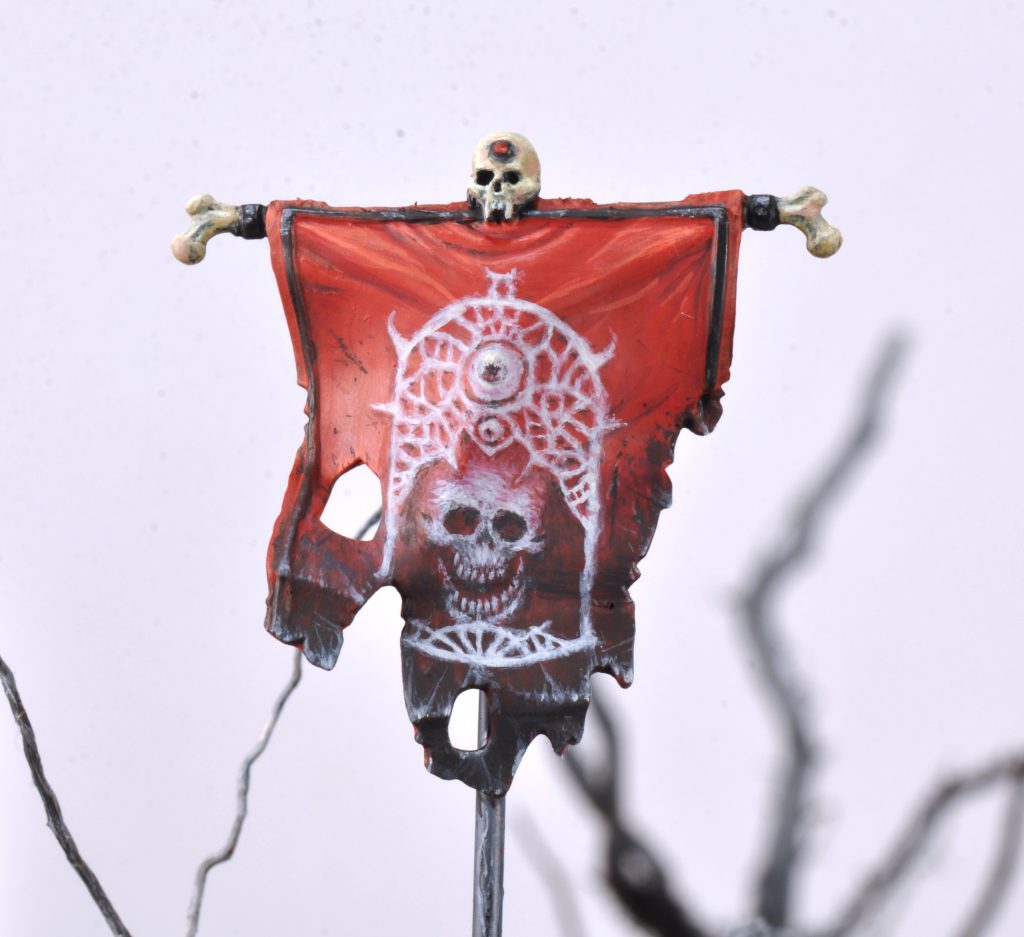
On the image below I used a S series #1 to lay out the emblem and fill in the shape. It’s doing finer work where the M series #2 shines for me. The talon and claw end of the emblem were refined with the M2. The scratches done on the yellow part with the M2 give a good comparison point to standard brushes. The scratches and edge highlights on the armor were done with an S1. The S1 can get lines as fine, but it is very easy to unintentionally make thicker lines.

Overall I find the M2 in particular a great addition to the tools at my disposal. It has a very specific job and can do it very well. Using it well requires a bit of learning and adjusting to get right but the results are well worth the effort.
Raf
Like Skails I’d never used a brush designed for miniatures. In fact, most of what I’d heard was that they weren’t worth seeking out. I found this surprising, as in my line of work a fit for purpose tool is almost always better. After trying the M series, I’m a believer.
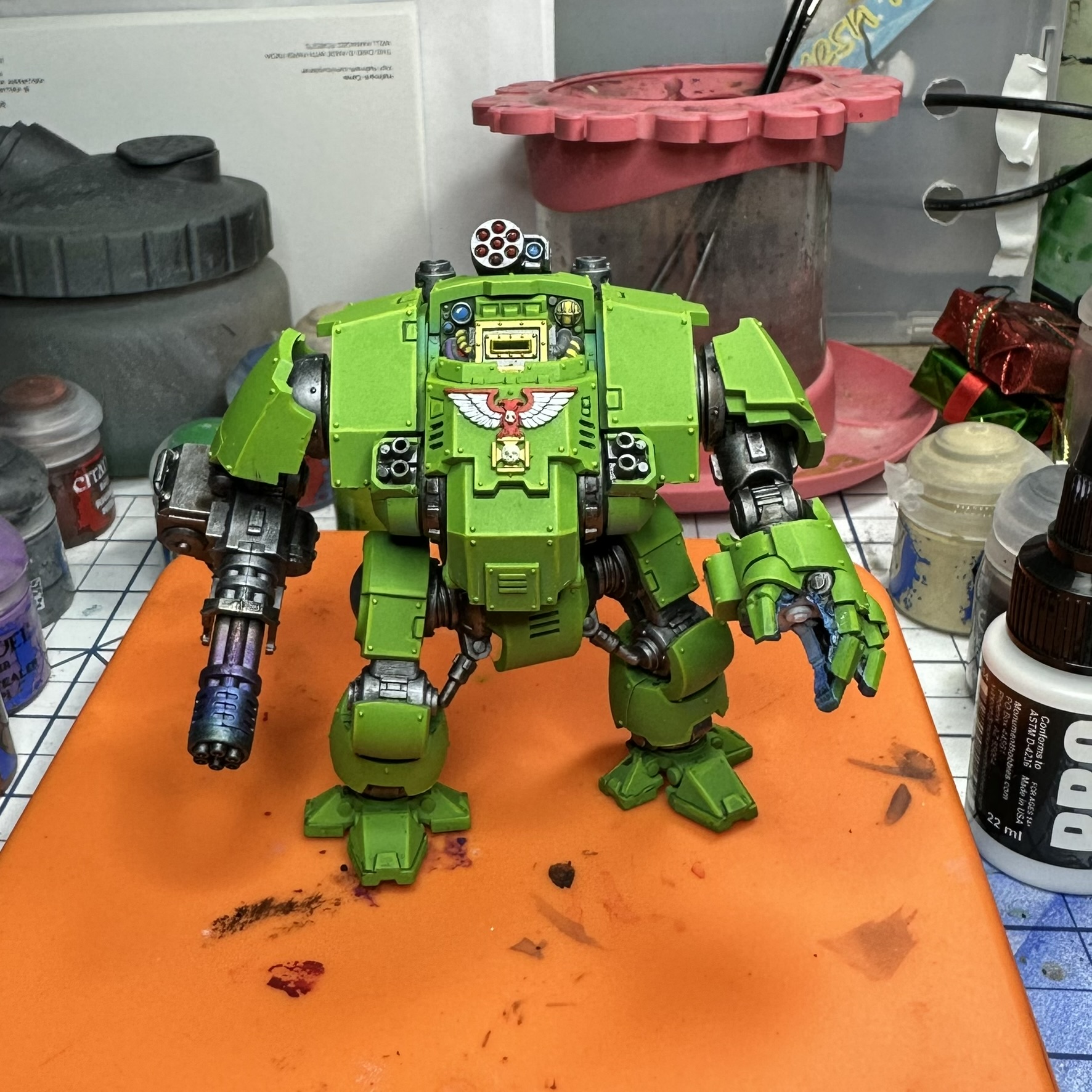
The “fancy” brushes we’ve all heard about over the years, like Windsor & Newton Series 7 or Rosemary & Co Series 33, are technically designed for watercolor. They obviously work fine for acrylic painting miniatures; in fact for soft flowing blends the shape works damn well. However miniatures have some other demands. My chapter scheme for my marines involves 3 layers of edge highlights and the first two are not accomplished by dragging the side of the brush along the edge. I do it, essentially, by free-handing a straight(ish) line along every panel, then doing another thinner one, and then finally doing a more normal edge highlighting process.
The shorter stiffer bristles worked great for pulling the line, and allowed me to move much quicker. Mine aren’t perfect, and certainly aren’t at Skails level, but I did all the edge highlighting on this Dreadnaught faster than a single Intercessor with my Rosemary & Co watercolor brush. The stiff bristles gave me the confidence and ability to move quicker.
Wrap-Up
As noted earlier, if you’re only going to have 1 or 2 brushes we wouldn’t recommend having a “miniatures” brush in your paint cup. The more traditional Series S shape is a better option. However, as that paint cup starts to runneth over with brushes it’s definitely worth considering this shape. Making textures and advanced techniques easier means you can get better quality for the same effort, or same quality in less time! Either is a major win in your painting journey.
Hey wait, doesn’t Artis Opus sell brush sets and accessories with Goonhammer branding on them? They sure do. And isn’t weird to review a product you have a business relationship with? It sure can be. Goonhammer’s relationship with Artis Opus started with Raf’s review of drybrushes, a very standard situation in which Artis Opus sent him some brushes to review. As you can see, he loved them and from that a new partnership grew.
We’re confident you’ll like these brushes and our experts are not the only experts using and loving Artis Opus brushes. This website runs on the trust that you, our audience, have in us and we would do nothing to jeopardize that trust. We don’t love these brushes because our name is on the box, we put our name on the box because we believe they’re among the best brushes you can buy.
